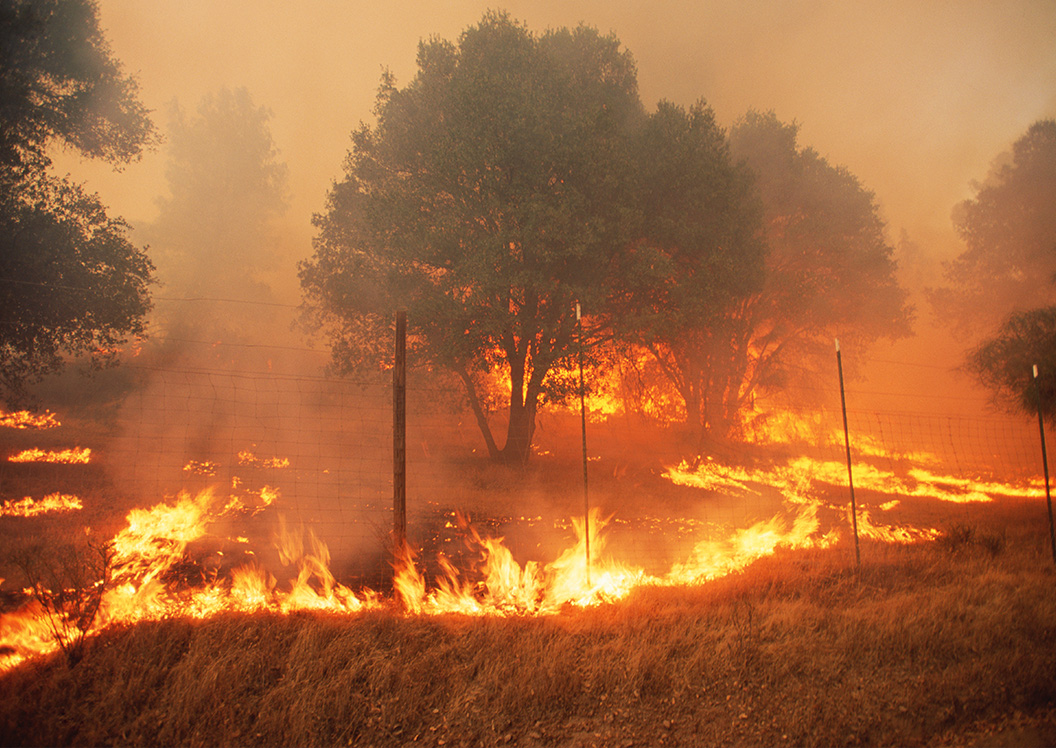California Insurance Commissioner Ricardo Lara did not mince words when speaking at a Realtor event this week on the difficulties facing homeowners in the wake of major pullbacks by State Farm, Allstate and other insurers.
“We’re not going to sugarcoat any of this,” he said during the online panel organized by the California Association of Realtors’ think tank the Center for California Real Estate. “Some people can’t find insurance at any price and others are losing coverage when they’ve never even had a claim.”
Lara said he is in the process of hammering out California’s largest insurance reform in almost 30 years. He added that Proposition 103, the 1989 voter-passed legislation that requires the state to approve rates but does not require insurance companies to offer coverage, was “written in the days of pay phones and pagers and doesn’t account for the current climate crisis.”
The challenges in the market are partially caused by “outdated regulations, quite honestly, in the state, and decades-long neglected issues,” he explained. Other contributing issues are climate change, the pandemic and inflation.
CAR data shows that last year, 7 percent of home sales fell out of contract because of insurance issues — either the buyer couldn’t get it or it was too expensive — and that’s “completely unacceptable,” Lara said. But his planned reforms, which he said are on track for implementation by the end of this year, will bring insurance companies back, he contended.
Lara said he had commitments from Allstate and Farmers to start writing new policies again after the reforms. They include requiring insurance companies to write no less than 85 percent of their statewide market share in at-risk areas and using new models and mitigation requirements that don’t just look at past events to calculate risk. The new regulations also allow insurers to pass on at least some of the cost of reinsurance, and expand commercial coverage of the California FAIR Plan up to $20 million per structure, which is a huge benefit for condo buildings. He also teased an upcoming announcement before the end of month about separate measures to reform the FAIR Plan, a statewide “temporary solution” for homeowners who cannot get insurance through a regular carrier, according to its website.
The FAIR Plan was designed as the option of last resort, but it has now become the only option for a growing number of consumers, Lara said, which means they are paying more for the most basic coverage. The trend creates a “negative feedback loop” wherein traditional insurance companies will pull out of areas where there is heavy dependence on the FAIR plan, which only increases dependency on and risk in the plan.
Relief should come “in the next year or so,” he said, but until then he advised Realtors not to let their clients “settle for the FAIR plan.” He also suggested that agents start looking at smaller and out-of-region providers rather than going back to the same big names time and again.
Sellers agents should start “staging for safety” by advising their clients to put in fire-safety upgrades from the state’s new 10-point action plan Safer From Wildfires before they put their house on the market, he said. That will attract more buyers and make getting insurance easier and less expensive.
“Unlike rental furniture, those wildfire safety benefits don’t go away after the house is sold,” he said. “Whenever you upgrade a roof, or windows, or clear brush or make safety improvements from the Safer From Wildfires list, you can qualify for an insurance discount.”
For homeowners that get a notice saying their policies are not being renewed, Lara said, “don’t think of that letter as an end all be all.” Insurance companies need to offer 75 days’ notice and a detailed explanation of why they are ending a policy, and if either of those standards is not hit, he said the commission has been successful in helping people keep their coverage.
After the commissioner finished his comments, the session moved into a panel discussion with advocates for both consumers and insurance companies.
Rex Frazier of the Personal Insurance Federation of California, an industry lobbying group, said overall the industry has been supportive of the reforms, depending on “what the words on the page” are when the final versions are released. He expects a proposal from the state on how much reinsurance expense the industry can pass on to consumers will come by next month.
As the executive director of consumer advocacy group United Policyholders, Amy Bach said it is “scary” to think that insurance companies will soon be able to pass on the cost of reinsurance.
“On the other hand, the current situation is scary,” she said, adding that she would rather see regulated companies be enticed to return to the state instead of “not admitted companies that are filling a lot of the gaps today.”
Both Bach and Frazier agreed that proactive fire mitigation on the part of homeowners and entire communities would go a long way towards bringing insurers back and that access to financing for these potentially expensive improvements was needed.
CAR President Melanie Barker, who moderated the event, said the organization “does not generally support” PACE financing for these upgrades, but panelist Nancy Wallace of the UC Berkeley Fisher Center for Real Estate and Urban Economics survived the deadly Oakland Hills firestorm of 1991 and said she and her neighbors successfully used PACE financing to underground electrical wires so that a similar event would be less likely to happen again.
PACE stands for Property Assessed Clean Energy financing, in which private or government money is loaned for upgrades and then paid through a tax lien on the property. The “patient money” attached to property tax bills has just been paid off in the Oakland Hills, Wallace said, and the important safety upgrade would not have happened without it.
Bach said insurance companies are not giving out meaningful discounts for mitigation measures, but Frazier said each upgrade on its own was not enough to merit a large discount.
“Just because you’ve done six out of seven, you have to do seven or else that one weakness is going to cause your home to go up,” he said.
They also disagreed on whether insurance companies would have to chip in money to reimburse the FAIR plan if another major fire occurred that impacted many FAIR-insured homes. Bach said in the last 30 years, the plan has never asked for reimbursements from insurance companies.
“We had some blockbuster fires and the FAIR plan did not have to make an assessment,” she said.
But Frazier said, and Wallace agreed, that a large assessment was “just a matter of time and our current public policy is to cross our fingers and hope we don’t have a big fire. That’s the nature of our planning right now.”
With smaller insurers like Merced Property and Casualty going bankrupt after the Paradise fire and even big insurers like State Farm in danger of financial insolvency, plus the growing reliance on the FAIR plan in high-risk areas, the results of such an assessment could be disastrous, Frazier posited.
“If we allow the FAIR plan to grow indefinitely, we’re just going to have a big event that bankrupts the insurance industry,” he said.
Read more



